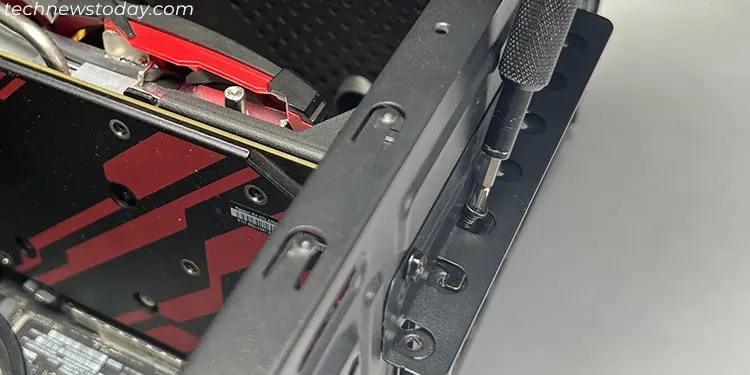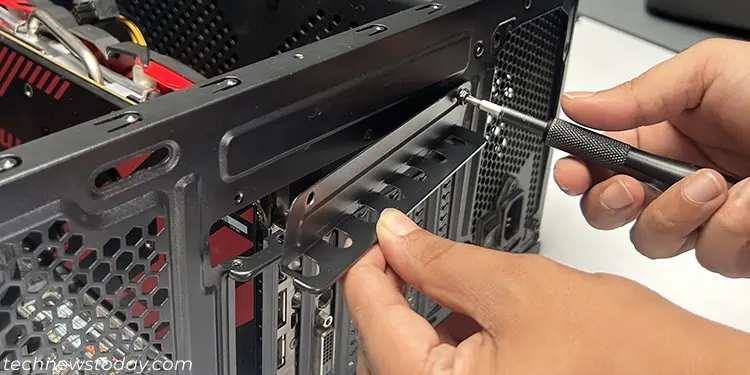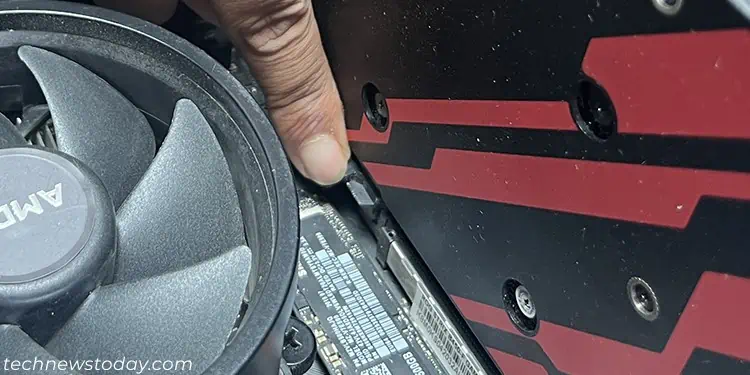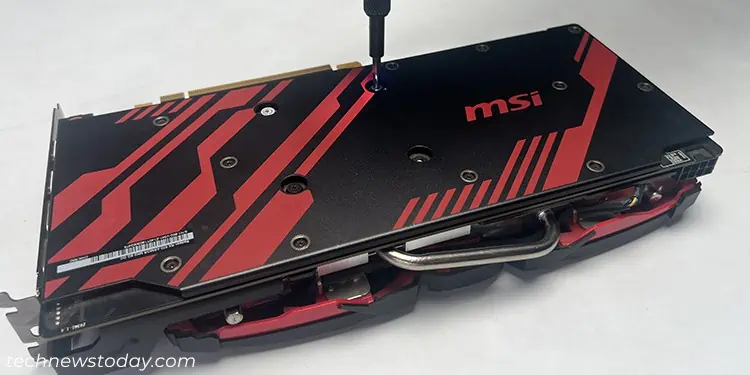Thermal Paste on a GPU usually lasts for 5+ years, but with time, it will eventually dry out. Thisdegradation processaccelerates when youoverclock your GPUor run it under a high workload. If your GPU’s temperature stays above 70°C most of the time, it’s best to replace its thermal paste.
To apply thermal paste to your GPU,detach the heatsinkfrom the graphics card,clean the paste,andapply a new layer. It’s also a good idea toreplace the thermal padsfor the VRMs and VRAMs if they are damaged.
However, you should take a few precautions before applying thermal paste to a GPU. It’s a little different from doing it on a CPU because you have to take the card apart.
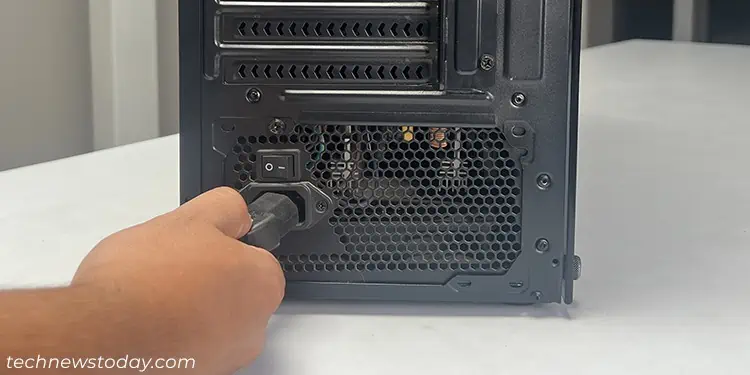
ensure you understand how to take your card apart before you start. You may have to look up a teardown video or check your manual. Don’t follow the instructions from another card or one made by a different manufacturer.
Now let’s move on to the actual process.
Prepare Necessary Materials
You have to have certain materials and equipment ready beforehand to clean and apply thermal paste to your GPU properly.
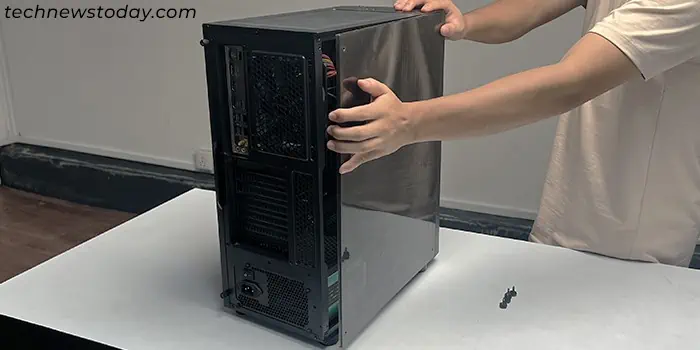
ensure you use an Anti-static wristband toground yourselfand prevent any electrostatic discharge damage to the computer hardware. Alternatively, you may also discharge any built-up static charge by occasionally touching a metal surface.
Then you may start with taking out the graphics card or separating its heat sink.
Remove the Graphics Card from the PC
If you want to replace the thermal paste on a dedicated graphics card you have already installed, you have to first take out the card from its PCIe slot. To do so,

Detach the Heatsink and Graphics Card
Now that you have taken out the graphics card, you need to detach its heatsink to expose the graphics processor. For that,
You have to clean the old paste properly before applying a new layer. If theold paste has dried, it will have large pockets of air that can’t be filled. Even when not dry, it won’t retain its proper structure, and some air pockets will still remain.
These air pockets will increase the overall thermal resistivity of the interface and affect the cooling process, thus the need for cleaning. To do it,
